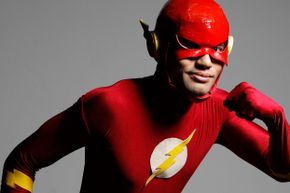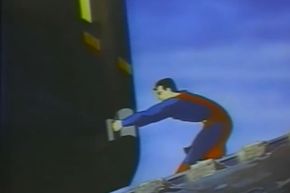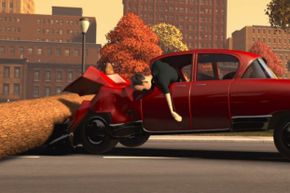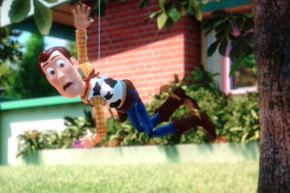Our favorite confused snowman, Olaf, experiences a lot of physics, with all the falling, tumbling, sliding and crashing into things he does in the course of Disney's "Frozen."
Although Olaf is made of snow, he's mostly treated as a solid object. When Olaf falls off a cliff, he first experiences acceleration due to gravity. The force of Earth's gravity accelerates Olaf toward Earth. We could calculate this with Newton's second law, a=F/m. Since he's made of snow, Olaf is probably not very dense, so you might think he wouldn't accelerate as quickly as if he were made of solid ice. However, all objects in free fall accelerate at the same rate, regardless of their mass. At some point, though, he will reach terminal velocity, the point at which the drag of air pushing on him equals the acceleration due to gravity, and he accelerates no more. This is an important physics concept, because terminal velocity does not depend on Olaf's mass, but rather on his shape. More open or spread out shapes create greater drag, resulting in a lower terminal velocity. This is why a parachute works -- it doesn't make the skydiver any lighter, it just increases her drag.
When Olaf hits the ground at the bottom of the cliff, he experiences deceleration (which is a form of acceleration). Could a living snowman actually survive such a fall? Lucky for Olaf, there's a thick layer of snow on the ground. That means his deceleration is spread out over a few extra fractions of a second, compared to landing on solid concrete. That makes all the difference, because spreading out the force imparted to Olaf over a longer period reduces the damage it will do to him, just like the air bags in your car slow down the deceleration of your body in a crash.










